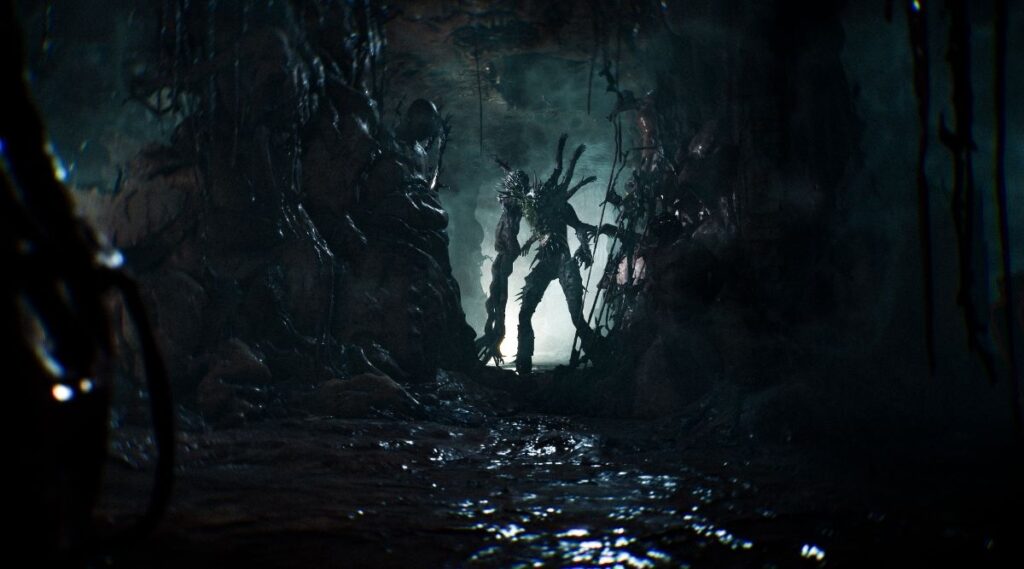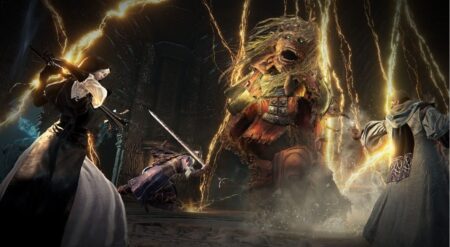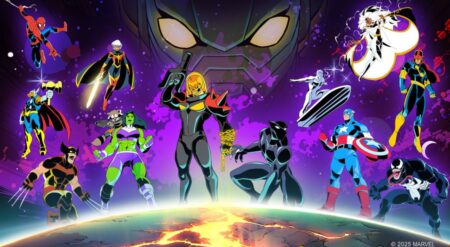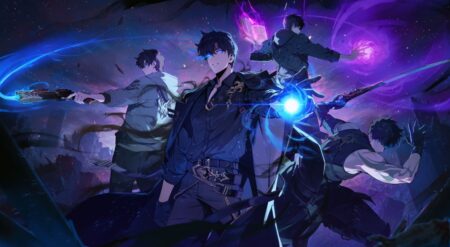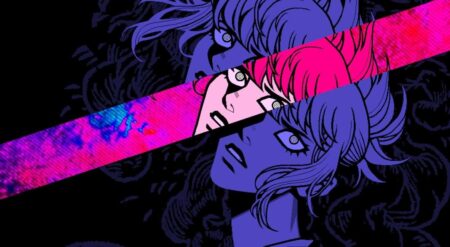Bloober Team has quickly become a go-to creator of Horror games. And their latest release, Cronos: The New Dawn, builds upon what they’ve learned in the past to create a brand-new IP for the survival horror genre. Following recent Bloober Team releases that involved reviving well-known IPs, starting from scratch and creating a game like this is pretty impressive. But the company’s most significant flaw remains prevalent in Cronos: the thrills are few and far between.
Cronos puts you in the futuristic armor of the Traveler. They’re a time-traveling warrior who’s tasked by the Collective to harvest certain key individuals from the past to try and save the Traveler’s people’s future. And their mission is a dangerous one.
Several other Travelers have perished trying to get to their ultimate goal, and it’s up to you to carry on the mission. With horrific humanoid creatures everywhere trying to kill you, a devastated Poland, and a mysterious member of the Collective only known as the Warden, not everything is adding up about the Collective’s overall goals.
Cronos: The New Dawn’s slow-burning story is filled with mysteries.
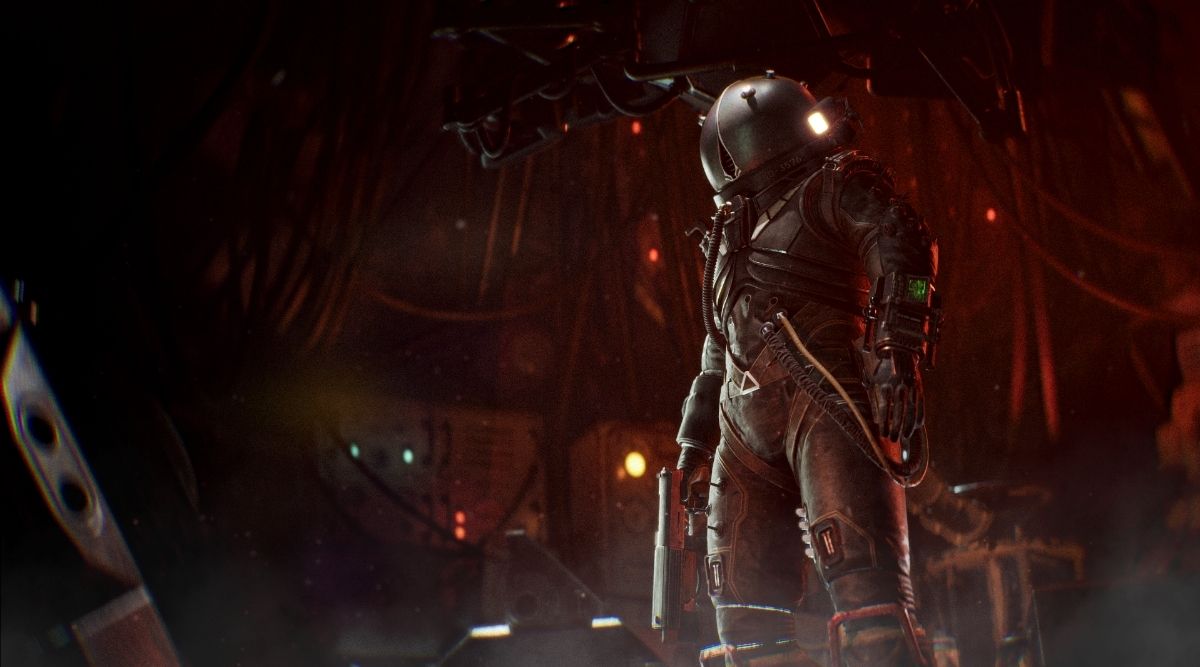
The New Dawn‘s story is a slow burn that accomplishes a great deal with so little. It reveals little to you at the start, and by the end, the Collective is as mysterious as it was in the beginning. It focuses on the human aspect of surviving an extinction-level event. This is best illustrated by its time-travel aspect.
You get a great glimpse of the outcome of the apocalypse first, then jump back in time to see every event as it unfolds, from before the outbreak to just after. Jumping ahead to the distant future to see how destroyed this iteration of Poland has become is breathtaking in its own right.
You read more and more about the struggles, similar to the recent real-world pandemic. It ranges from light talk of noise complaints and evolves into final farewells or dim hope of plans for after whatever the government isn’t telling them.
Cronos’ worldbuilding is excellent, particularly with the audiologs scattered throughout. A nice touch is that you can simply walk away and they’ll still play for you. No need to hang around or stay in a menu to listen to the whole minute-to-minute-and-a-half log to get a slightly bigger glimpse into the fictional 1980s world.
Cronos: The New Dawn has shocking psychological twists.
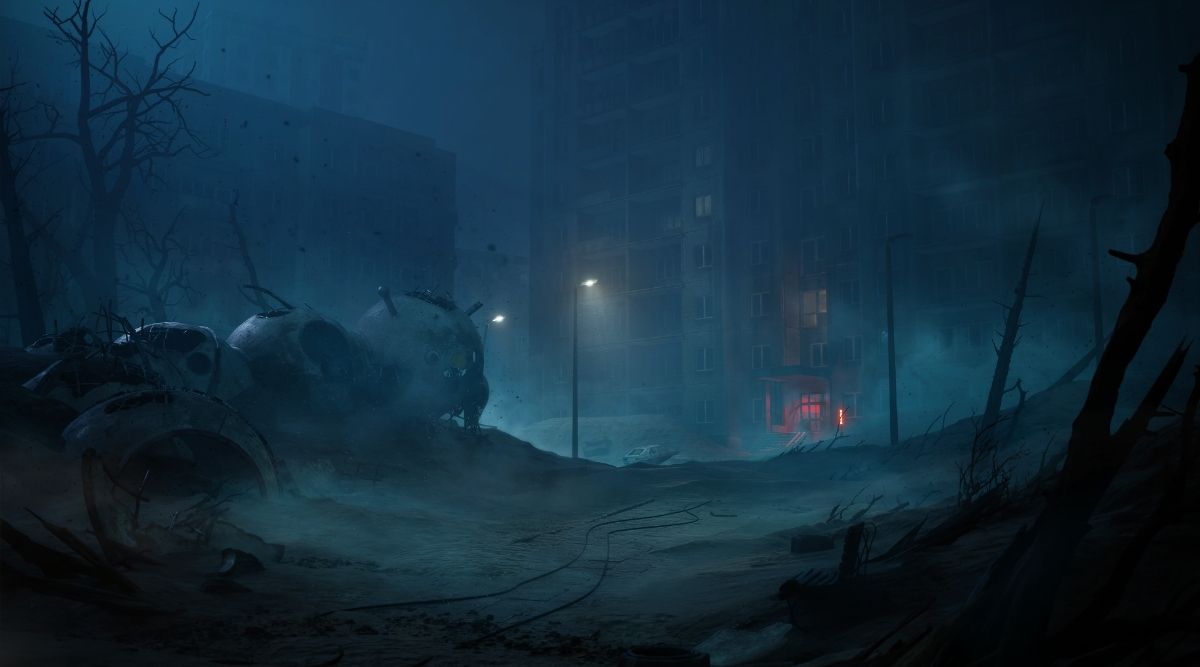
As for the main story, its growth from a simple mission to something much deeper is excellently paired with the Traveler’s evolution. At first, they start out as a humanoid-like robotic-speaking shell and grow into a fully fleshed person with fears and thoughts. Their goals gradually develop from the Collective’s mission, which comes first, to uncovering the truth about what exactly happened to New Dawn, its people, and the previous Travelers’ involvement.
The revelations of what exactly is going on, not just to New Dawn, but to the Traveler, are where the most terrifying parts of the game lie. It involves shocking psychological twists along with the body horror elements of whatever disease is being spread in the past. The humans are congealing together to create a wriggling mass that only wants to feed on more biomatter to grow.
And the humans that are saved interact with the Traveler, slowly corrupting them with their own thoughts, wants, and personalities. In other words, what the Traveler is slowly going through consciously and mentally is reflective of what the dead are doing. Additionally, some of the saved humans endure mental health issues or are already being corrupted. How that affects the Traveler over the course of the game is uniquely fascinating.
Bloober Team seeds all of the game’s great twists along the way.
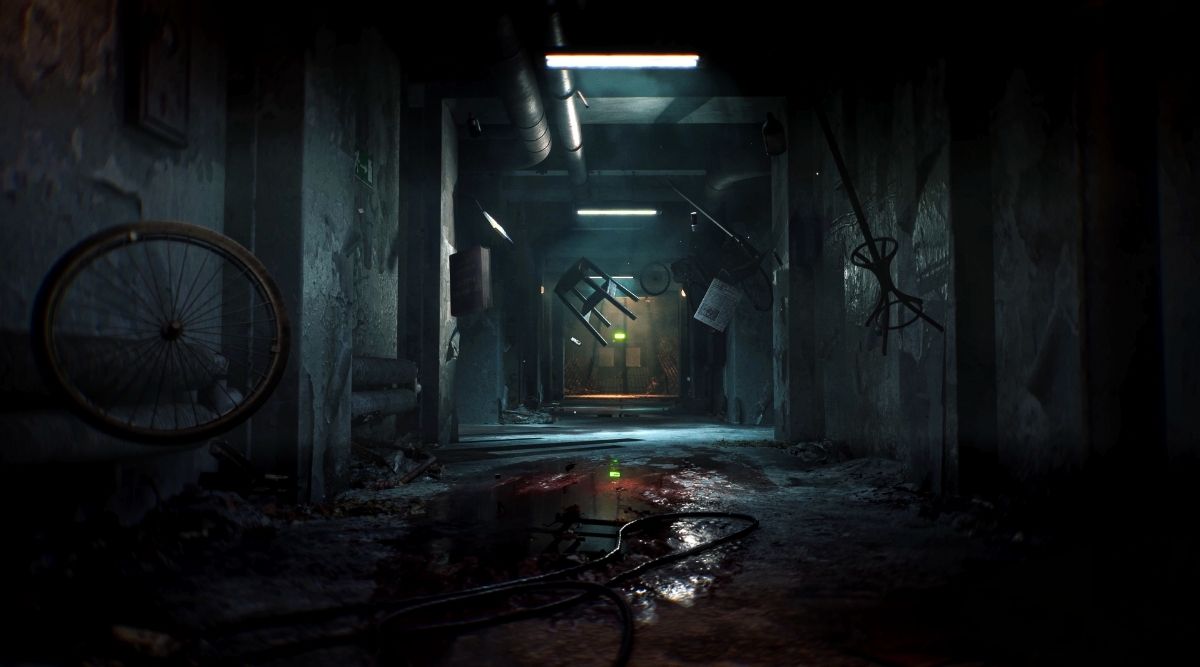
The last key part of the story is the Warden. Two members of the Collective cannot be active at the same time. Questions quickly arise about why they are both active and why the Warden is so involved in helping the Traveler complete their mission. Many unknowns come together to form the overall story.
It’s gritty, and the twists that slowly reveal themselves create many a-ha and jaw-dropping moments. Plus, there are no out-of-left-field twists that drop out of thin air. It all makes sense once you look back at all the information Bloober Team gives you from start to finish. By far, Cronos is one of the best stories Bloober has told. Sadly, the bread-and-butter gameplay isn’t nearly as scary as what is depicted in the cutscenes.
To give an apt comparison, the gameplay is very similar to Dead Space. You’re playing in a third-person perspective, smashing and whacking boxes for resources, and shooting mutated humans corrupted by something that loves to consume each other. The influences from similar third-person sci-fi survival horrors are worn on Cronos’s sleeve in great ways.
The weapons in Cronos all feel fantastic to use, especially the pistol, the first weapon you unlock. Every weapon has its purpose and is situational in its use. While the variety of weapons isn’t too great (there are only seven in total), how they’re used is very cool. For instance, each weapon has a charged attack. This will be your primary way to attack enemies, as every weapon’s charge attack seems to do the most damage while also being the most effective.
Every weapon has its place and time in Cronos: The New Dawn.
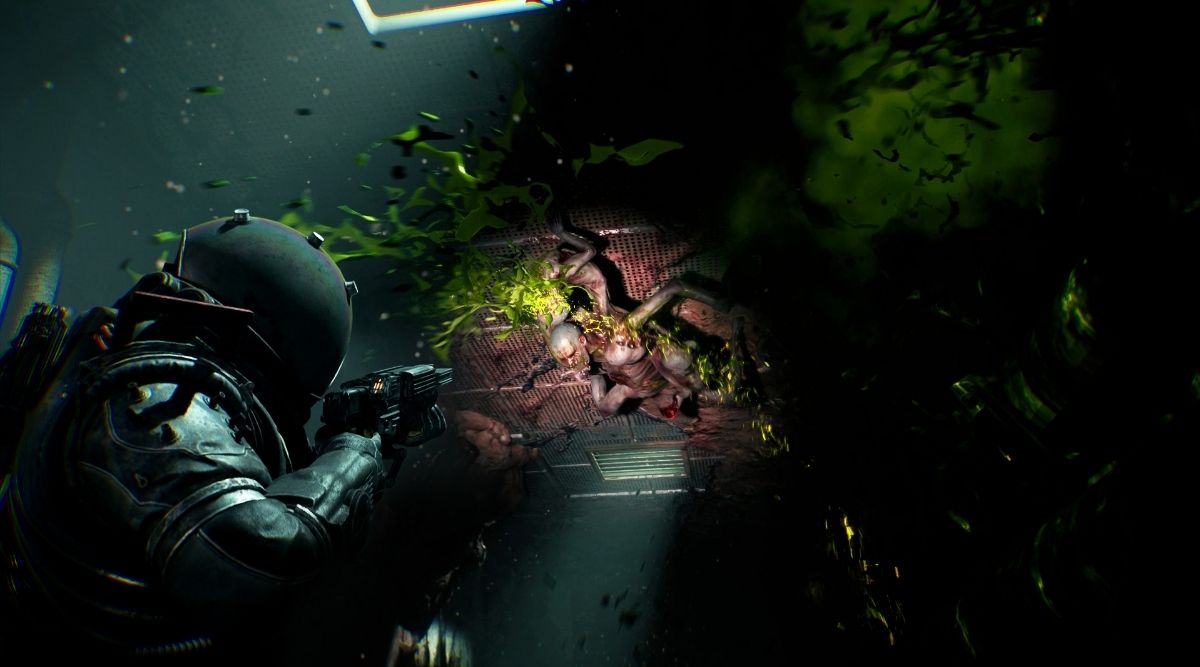
The pistol’s charge attack fires a more concentrated bullet, making it ideal for headshots and knocking enemies off their feet. The first assault rifle you get has an auto-aiming charge attack. This is good for enemies at a distance or those that crawl along the ceiling. Switching between them is quick, which is great when you start to get swarmed and begin to panic. Or, when you get low on ammo.
Another thing to think about with combat is fire. Two fire-based attacks burn everything around them. One shoots fire at your feet, the other creates a trap that explodes. Fire is key to preventing bad situations from getting worse. Early on, you learn that enemies can ingest corpses. This not only heals them but also equips them with armor, making them stronger. Large enemies can quickly become massive tanks that will absorb bullets unless hit in very specific spots.
Fire not only stuns and damages the enemies. It also burns away corpses. Managing the dead you leave behind is just as key as taking out those around you. Thankfully, the time they take to eat the fallen is well telegraphed and can be stopped with a couple of well-placed charged attacks.
While the enemy combining mechanic is very cool, and really has you focus on certain foes while being swarmed by others, the enemy variety is lacking. That could be because there was a focus on the different enemy forms, such as armor-growing enemies versus enemies that grow bigger. However, the several main types of enemies you face do get fairly stale.
Varied bosses require you to use every mechanic you learn along the way.
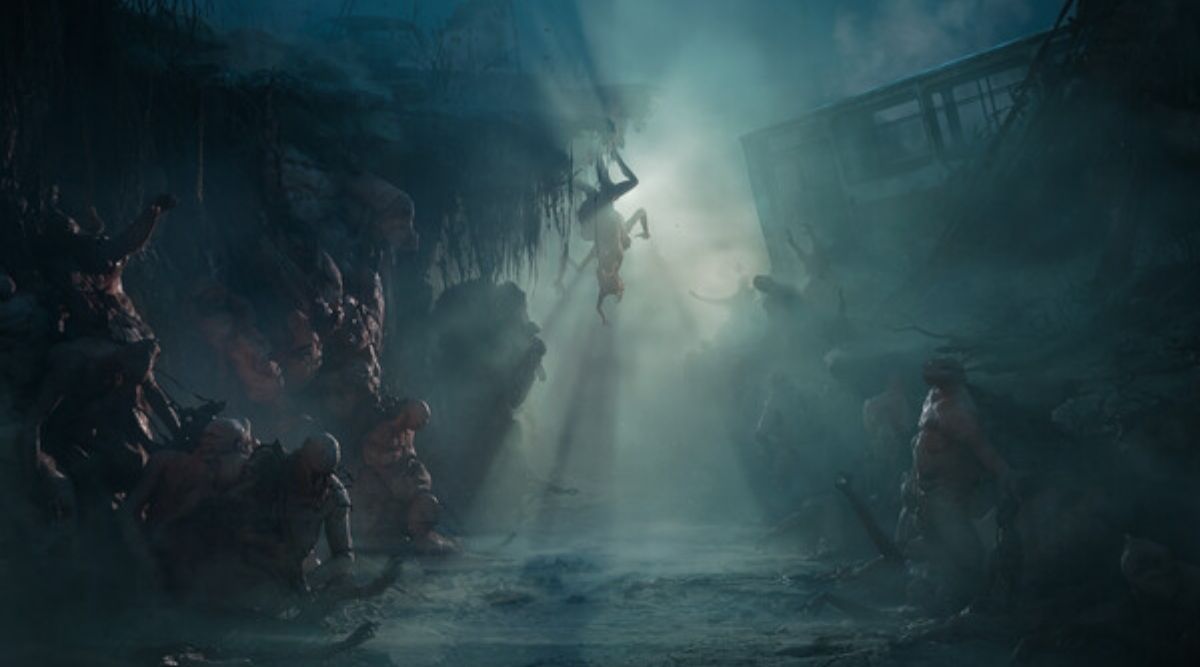
The bosses, on the other hand, are awesome and very well executed. They’re varied and require you to use mechanics you’ve learned up to that point to survive. One in particular requires you to use fire to expose its weak points while dodging its charged attacks, which open new areas in the game arena. Pairing these fights with the non-combat focused time reversal ability really has you focus on prioritizing and setting up traps to make it through.
The level design is also quite evocative, focusing on the key areas you’d expect for a survival horror game. Going back in time in a hospital during the outbreak to find a way to save someone is as thrilling as navigating a church and its graveyard.
The same applies to exploring a refinery that was ground zero for the outbreak. It’s impressive how each area has been designed to show the evolution of the disease. They showcase how far the corruption/destruction has gone in the future, and getting a glimpse of where it started back to the past and seeing its gradual spread.
Sadly, Cronos’ melee mechanic isn’t as impactful as the guns are, probably because of how impactful the bullets are. Alternatively, the melee is presented as a last-resort attack. Melee swings tickle enemies. They are not even good at pushing foes away. Its only value is just to get a tiny bit of damage off from those you’ve knocked down.
Crafting and upgrades are well-supported by evenly paced checkpoints.
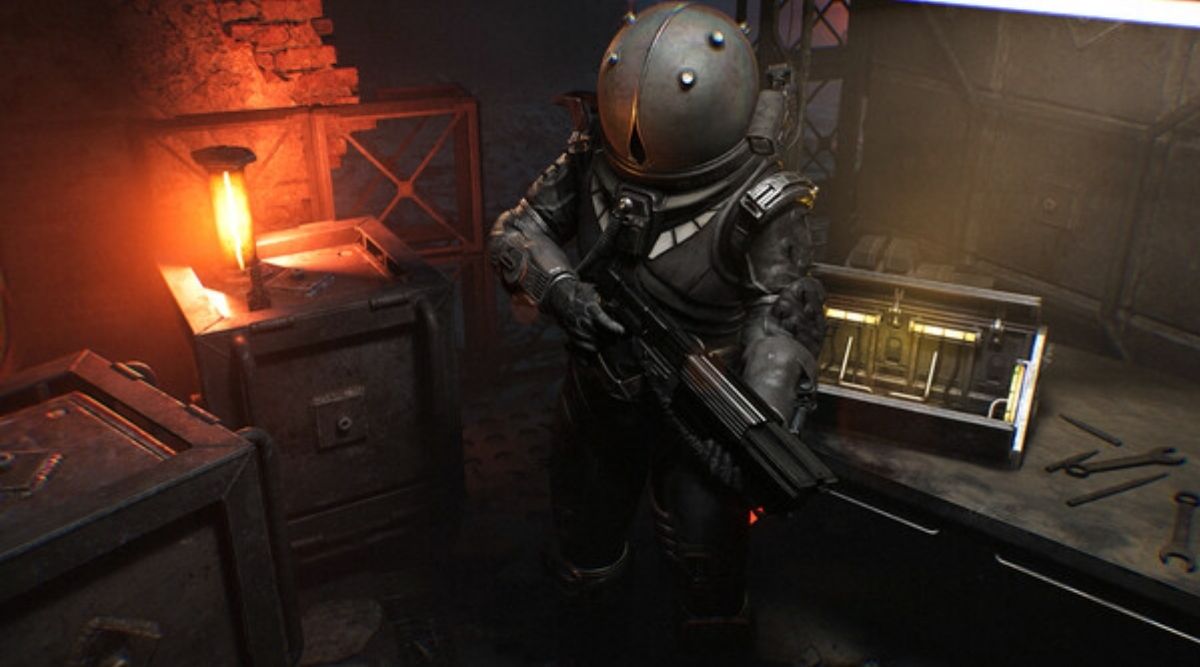
What would be nice to see, with how disgusting the enemies are, is if they changed based on what weapons you used. For instance, parts of enemies that a focused attack has hit get blown off or show wear on them. Enemy health is instead represented by a little light on the side of your gun that gives a hint at how much health the foe you’re aiming at has left. The UI is minimal, which helps make the whole experience feel immersive. However, it still feels like some key pieces of info, like enemy health, could be better represented.
Then there is crafting and upgrading. Both are fun, but highly limited by the tiny amount of inventory space you’re given. Crafting is well represented by an easy-to-understand menu, while also allowing for quick item crafting. Holding a button down that corresponds to, let’s say, the shotgun will have the Traveler make more shotgun ammo if you have the resources. Same for holding the healing button, creating more healing items if needed.
Thankfully, Cronos’ crafting and upgrades are well-supported by evenly paced checkpoints that each contain a storage unit. Inventory management is so key, especially given how small stacks of ammo, health, and other items that take up that space are. So returning to a safe room is vital before trekking further, particularly if you want to collect valuable objects that can be sold for credits that can be used for upgrading weapons.
Finally, the incorporation of saving humans as an equippable item is also a great spin on finding ways to make your Traveler fit your playstyle. It also serves well to make each playthrough feel different. Each time you rescue a human’s conscience, you must equip it or delete it forever.
The biggest flaw for Cronos: The New Dawn is that it just isn’t very scary.
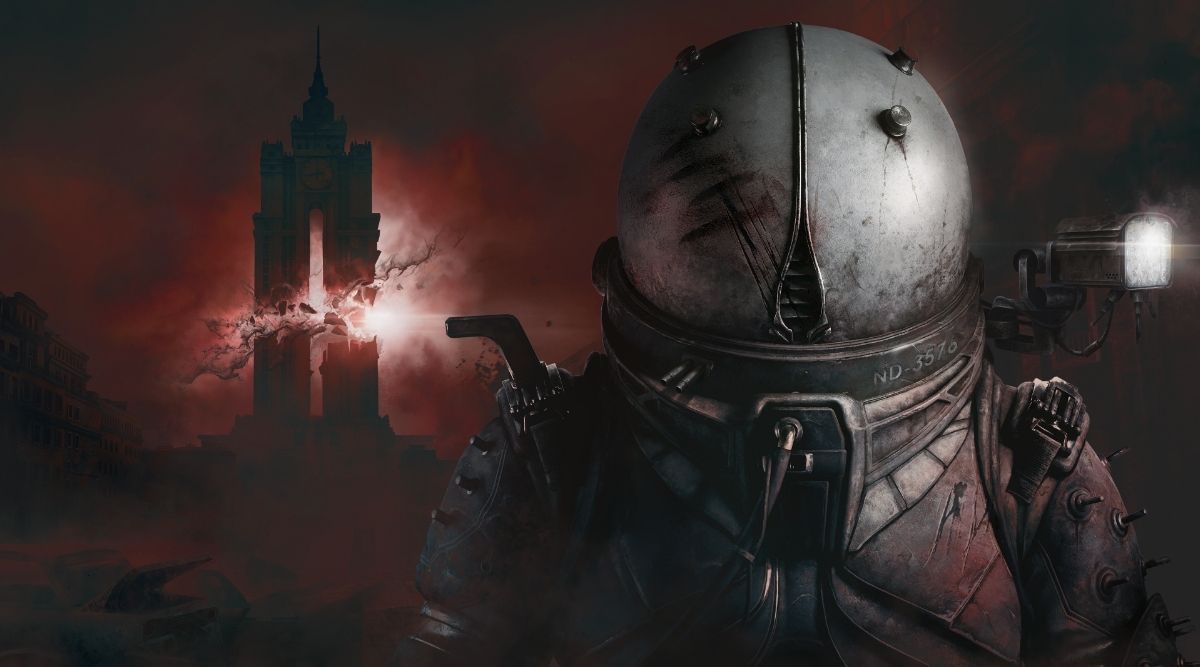
The saved humans change some interactions in the world and even some cutscenes, as some have a relationship with each other. They also change up the gameplay slightly, like dealing more damage, reducing crafting costs, or being able to find more credits in the world.
Only being able to slot three at a time makes it very tough to decide who to replace, as the changes are permanent. Something as subtle as this kind of upgrade really helps with introducing more replayability to this shorter experience. I cannot wait to play more to see what changes.
Unfortunately, a key focus of the game—the horror in the minute-to-minute gameplay—is quite lacking. There are some cheap jump scares, but the real fear stems from the tension that arises when running low on ammo and supplies.
There’s nothing that really instills deep fear. You may get glimpses of new enemies, but you still feel safe. The real fear comes from the story told through the cutscenes and learning more about what happened to past Collective representatives and New Dawn’s residents.
Cronos: The New Dawn is a lot of fun as a survival horror. While not terrifying, it is still stressful and does something unique with the genre. Especially with the enemy aggressiveness and transformations, you’re always kept on your toes. Yet it still has one key flaw. It’s not a scary game. It does, however, deliver a great story that borders on body and psychological horror.
Cronos: The New Dawn is available September 5th on PC, PlayStation 5, Xbox Series X|S, and Nintendo Switch 2.
Cronos: The New Dawn
-
Rating - 8/108/10
TL;DR
Cronos: The New Dawn is a lot of fun as a survival horror. While not terrifying, it is still stressful and does something unique with the genre.

